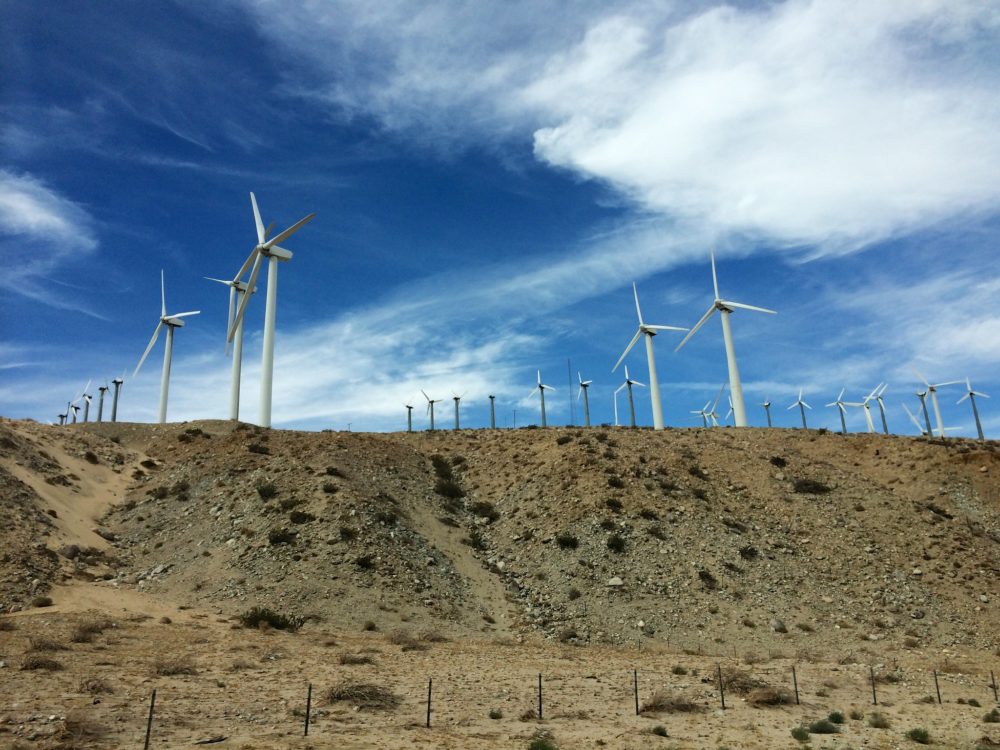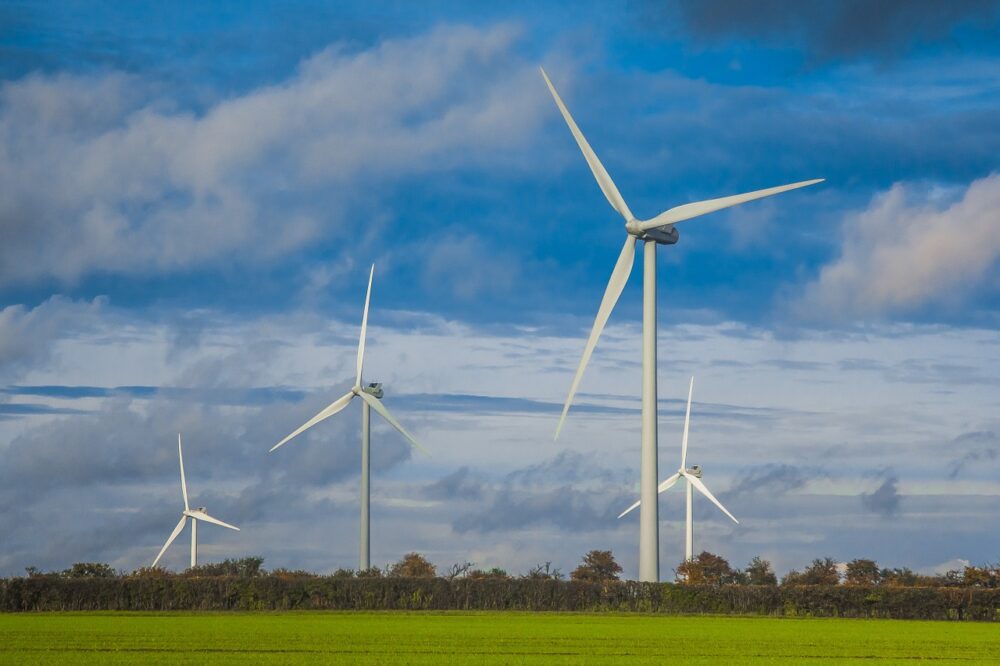The Institute for Energy Economics and Financial Analysis claims that many governments are prioritising environmentally-unfriendly brown stimulus measures instead of clean energy

The IEEFA's Vibhuti Garg believes there is a need to focus spending on plans that “cut greenhouse gas emissions as well as boost the economy” (Credit: Flickr/Homeandgardners)
As the world looks to plot its path towards an economic recovery from the coronavirus pandemic, analysts believe clean energy sources “must play a greater role”.
The virus has so far had a significant impact on a number of industries and slowed down the adoption of emerging renewable technologies – a key asset to any future low-carbon plans.
But while there has been much talk of a “green recovery” from the pandemic, analysis by the Institute for Energy Economics and Financial Analysis (IEEFA) claims that although governments have responded with a range of “massive fiscal interventions”, many of them are “prioritising environmentally-unfriendly brown stimulus measures”.
The International Monetary Fund’s (IMF) Fiscal Monitor Database shows that discretionary stimulus spending as a share of GDP varies across different countries. The US leads the way with 12.3% of GDP, followed by Japan and Germany with shares of 11.3% and 9.4%, while India has a much lower share at 1.2% of GDP.
Vibhuti Garg, an energy economist at the IEEFA, says: “The Indian government needs to build in green recovery-oriented measures to deal with the current crisis and, more importantly, to prevent the climate crisis from impacting people’s health and livelihoods.”
Stimulus package support for clean energy for the coronavirus recovery
Garg believes that with such large-scale government investment, there is a need to focus spending on plans that “cut greenhouse gas emissions as well as boost the economy”.
She adds that the pandemic has “amplified the call for stronger climate action to prevent the next human crisis”.
Garg points to the Rhodium Group’s analysis of the IMF data, which shows that 20.2% of the EU’s stimulus is focused on green, climate-related priorities, compared to only 1.1% of the US’s stimulus and 2.4% of India’s.

Data by Vivid Economics reveals that across 17 major economies, out of the $11.8tn global fiscal stimulus packages, about 30% or $3.5tn, will flow into sectors that have intensive impacts on the environment.
But Garg questions whether countries are really doing enough to accelerate clean energy transitions.
She adds: “A glance at Vivid Economics’ Green Stimulus Index, which assesses the environmental orientation of stimulus funding in various countries, reveals recovery spending will have a net negative environmental impact in most of the countries.
“This is driven by the underlying policies supporting different fuels and energy types in the pre-COVID world.”
France and the UK the leading providers of unconditional support for clean energy
The Energy Policy Tracker by the International Institute for Sustainable Development (IISD) and other organisations shows that as of 14 October, G20 countries had committed over $390bn to support different energy types through new or amended policies.
Of that amount, $209bn is earmarked to support fossil fuel energy compared to the $145bn put aside for renewables.
Within clean energy, $51bn is committed for “unconditionally” clean investments, while the remaining $94bn is available to back the clean energy transition – but that is conditional upon sustainable implementation.
France and the UK are the leading providers of unconditional support for clean energy, with the US and Germany the biggest providers of conditional support.
The tracker shows that India has committed $23.3bn to supporting different energy types, with $9.86bn for fossil fuels.
There has been $12.1bn provided for electricity distribution companies, while clean energy is set to receive just $1.3bn.
Garg believes the disparity in support between fossil and clean energy is “particularly jarring” given that renewables “continue to out-perform fossil fuels on a cost basis”.
“Historically low renewable energy tariffs have been discovered in auctions in 2020, and global capital markets are rapidly moving away from fossil fuels, as their share prices hit new decade lows,” she adds.
“If India is going to back energy production, why invest in technology that is not only polluting but also less competitive?”
Some countries have been “stepping up” their clean energy packages
A report by the International Renewable Energy Agency (IRENA) said the clean energy transition should be placed at the heart of government economic stimulus measures responding to the coronavirus pandemic.
The energy watchdog claims this would take advantage of an opportunity to “accelerate the shift to sustainable, decarbonised economies”, as policymakers around the world pump trillions of dollars into recovery plans designed to help businesses and society mitigate effects of the coronavirus crisis.
The IRENA’s report suggests that while the investment needed to realise its “ambitious, yet realistic” net-zero pathway could be as much as $130tn by 2050, the benefits of such a financial intervention would be “massive”.
Garg highlights that some countries have been “stepping up” by implementing packages that include measures designed to support a green recovery and make up a large proportion of their overall fiscal stimulus.
She points to Germany as an example, where Chancellor Angela Merkel described her government’s action as a “package for the future” after it put forward $45bn to provide substantial support to green measures.

Garg labels the $830bn “Next Generation EU” recovery package as the “most environmentally-friendly stimulus package to date”.
About 30% of the fund will be directed towards green initiatives such as reducing dependence on fossil fuels, enhancing energy efficiency and investing in preserving and restoring natural capital.
But for Garg, the UK’s stimulus is a “mixed bag” because while substantial support has been put forward for green initiatives – including $3.8bn for wind power and energy efficiency improvements – there has been some “relaxing” of environmental regulations and support for higher polluters.
She believes France has proved the “most successful” country at attaching green conditions to bailouts, following the introduction of two major environmental conditions – the reduction of emissions by 50% and a minimum standard of 2% renewable fuel by 2030.
Its government said €2bn ($2.3bn) of the nation’s €100bn ($117bn) stimulus package will be made available for cleaner cars, with a focus on electric and hybrid vehicles.
Elsewhere, South Korea announced its $130bn “Green New Deal”, which will support a variety of green projects and jobs over the course of the next five years.
Indian government needs to provide fiscal stimulus to clean energy
Garg says to tackle the economic slowdown and loss of jobs in India, Narendra Modi’s government is emphasising the need for the country to become a “self-reliant economy”.
In order to meet its twin objectives of “fuelling economic growth and promoting domestic manufacturing”, she believes policymakers need to provide fiscal stimulus to clean energy – including renewables, storage technologies and electric vehicles.
“Other countries’ stimulus packages show that there are two paths to follow, and the future lies on the one less well travelled, which is accelerating investments in clean energy,” she adds.
“With this, the government can increase its revenue by expanding the manufacturing base for clean energy alternatives that will be in increasing demand internationally.
“This will also provide jobs growth in a sector that is more environmentally friendly and will not negatively impact the health of the people working in these areas.”
But at the same time, Garg believes India’s government needs to accelerate the phase out of “inefficient older coal plants”.
Fossil fuels currently make up about 75% of the country’s energy mix – placing it as the third-highest emitter in the world behind China and the US.
Garg says: “The government needs to adhere to the 2022 timeline for the adoption of environmental norms by the thermal power plants as they are one of the biggest contributors to local air pollution.
“UN Secretary General Antonio Guterres also emphasised that India needs to stop supporting fossil fuels and instead reap the benefits of renewable power.”
With the government expected to announce its recovery packages soon, Garg says India should “kick-start a truly green future by embarking upon a green-oriented recovery, as Germany and France have done”.
